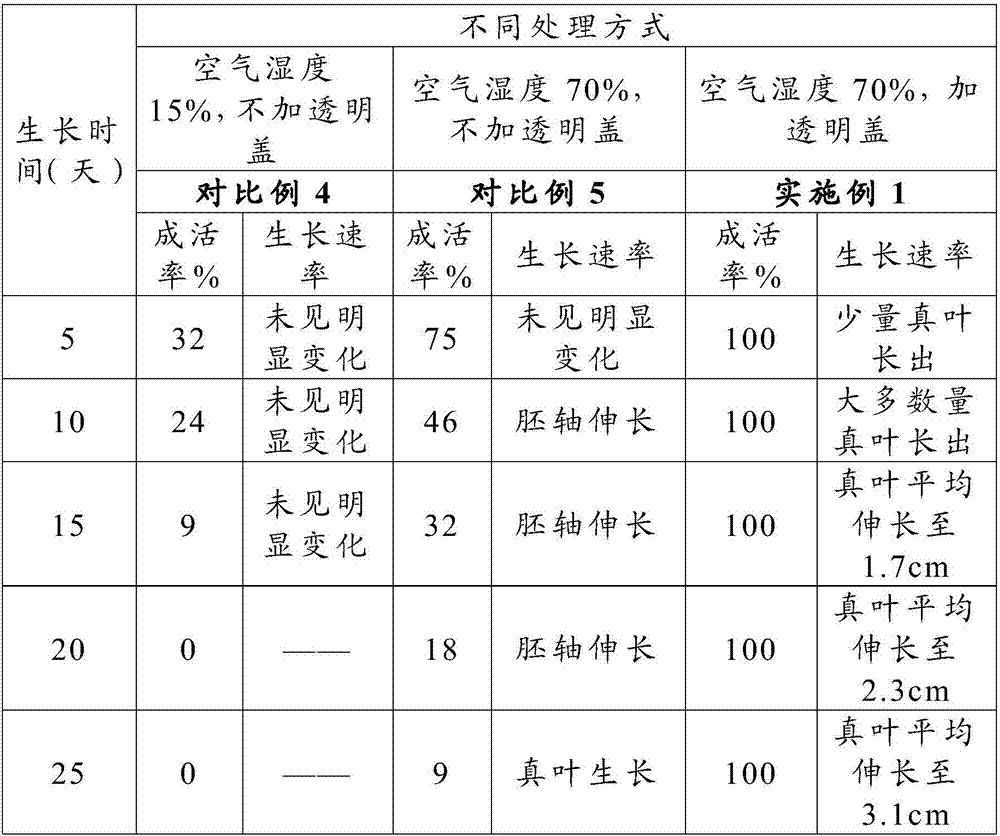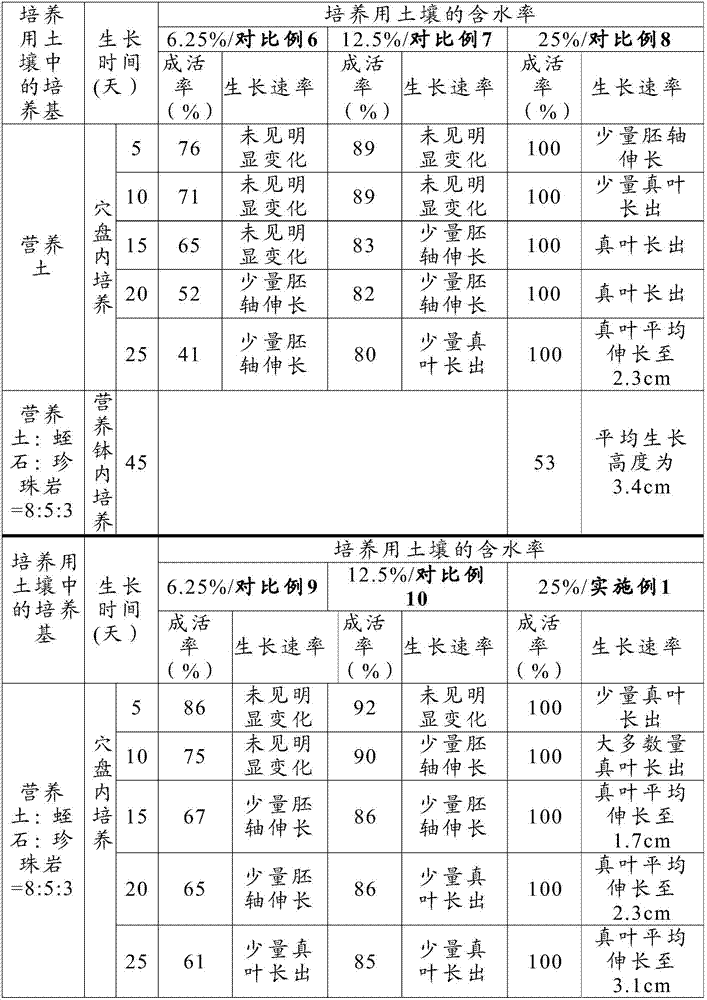Method for culturing acer catalpifolium plantlet
A kind of technology of Apricot japonica and small seedlings, applied in the field of cultivating Apricot japonica seedlings, and can solve the problems of low germination rate, affecting the cultivation of Apricot japonica seedlings, low germination rate and the like
- Summary
- Abstract
- Description
- Claims
- Application Information
AI Technical Summary
Problems solved by technology
Method used
Image
Examples
Embodiment approach
[0062] According to a preferred embodiment of the present invention, step 2 includes the following sub-steps:
[0063] Step 2-1, taking out the samara preserved in step 1, peeling off the samara to obtain seeds with different plumpness inside the samara;
[0064] Step 2-2, screening and cleaning seeds with different plumpness to obtain plump seeds;
[0065] Step 2-3, taking the plump seeds obtained in step 2-2, peeling off the seed coat, and obtaining the seed kernel;
[0066] Step 2-4, germinating and culturing the seed kernels obtained in step 2-3.
[0067] According to a preferred embodiment of the present invention, in step 2-1, the fruit wing includes two symmetrical parts. When peeling off, the fruit wing is divided into two halves from the middle, the fruit wing is peeled off from the joint, and the middle part is taken out. seed.
[0068] Wherein, removing the outer fruit wing of the samara can obtain the seeds positioned at the inside of the samara, but the quality...
Embodiment 1
[0140] (1) Collect the samara when the fruit wings of the Acer catalpa samara start to turn yellow, wash them with clear water, and then air-dry them for 2 hours to remove the moisture on the surface of the fruit wings and keep the moisture of the seeds themselves. Put the air-dried samara into a ziplock bag, minus the four corners of the ziplock bag and leave 1×1cm in the middle 2 The holes are large and small to facilitate the respiration of the seeds, and they are stored at a low temperature of 4°C for 30 days.
[0141] (2) After 30 days, take out 100 samara preserved in low temperature, divide the samara into two halves from the middle, peel off the samara from the junction, take out the seeds in the middle, soak the seeds in clean water, remove the seeds floating on the water surface, and then wash Seeds that sink to the bottom get plump seeds. Gently peel off the seed coat from the cotyledon of the seed with a scalpel to obtain the seed kernel. Spread two layers of fil...
Embodiment 2
[0148] Repeat the process of Example 1, the difference is: in step (1), the samara is air-dried for 1.5h, and stored at 2°C for 40d; in step (2), when germination is carried out in water, the water has not passed the seed 1 / 3 place of thickness; In step (3.1), keep air humidity to be 60%, the water content rate of cultivation soil is 20%; In step (3.2), the air humidity at the beginning of control is 60%, cultivation is The moisture content of the soil is 20%.
[0149] Wherein, the average germination rate was 92%, and the growth rate and survival rate of seedlings were similar to those in Example 1.
PUM
 Login to View More
Login to View More Abstract
Description
Claims
Application Information
 Login to View More
Login to View More - R&D
- Intellectual Property
- Life Sciences
- Materials
- Tech Scout
- Unparalleled Data Quality
- Higher Quality Content
- 60% Fewer Hallucinations
Browse by: Latest US Patents, China's latest patents, Technical Efficacy Thesaurus, Application Domain, Technology Topic, Popular Technical Reports.
© 2025 PatSnap. All rights reserved.Legal|Privacy policy|Modern Slavery Act Transparency Statement|Sitemap|About US| Contact US: help@patsnap.com



